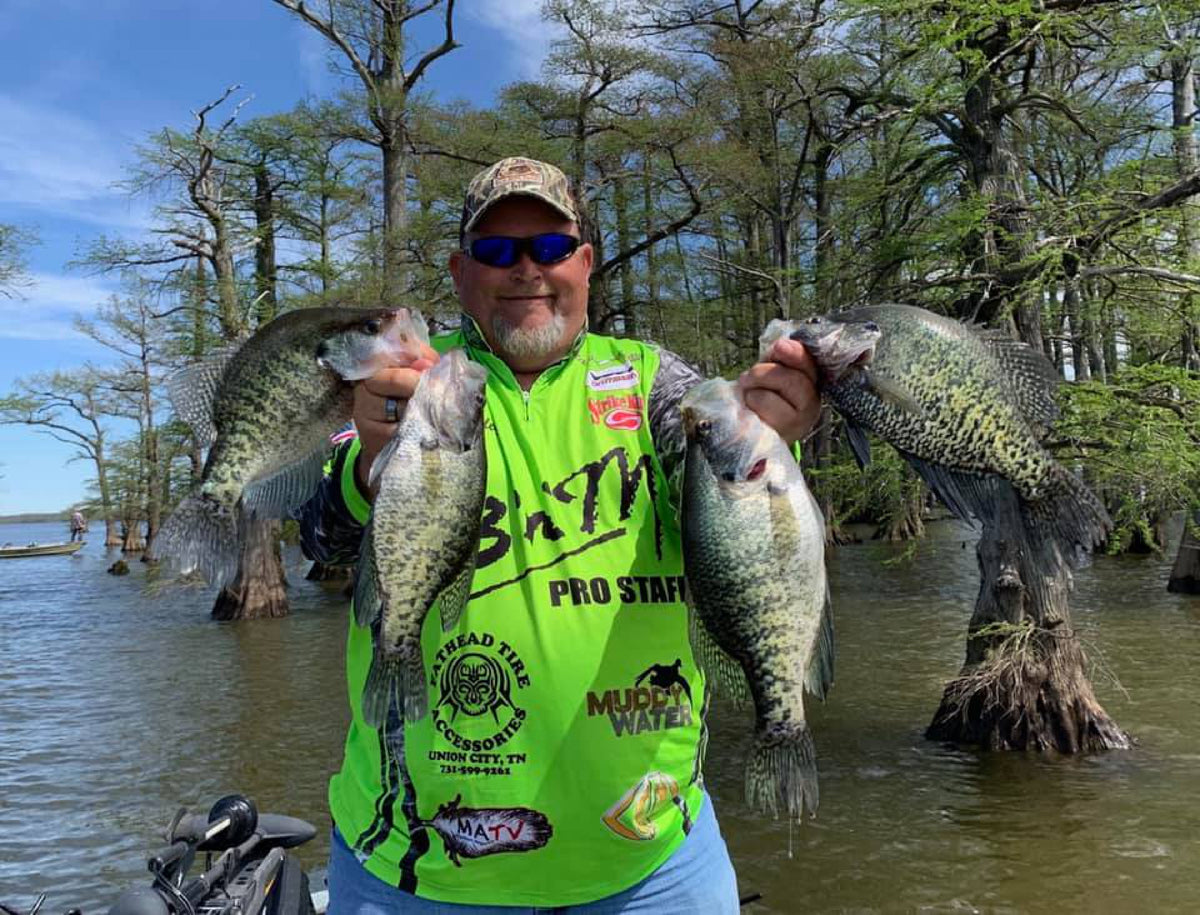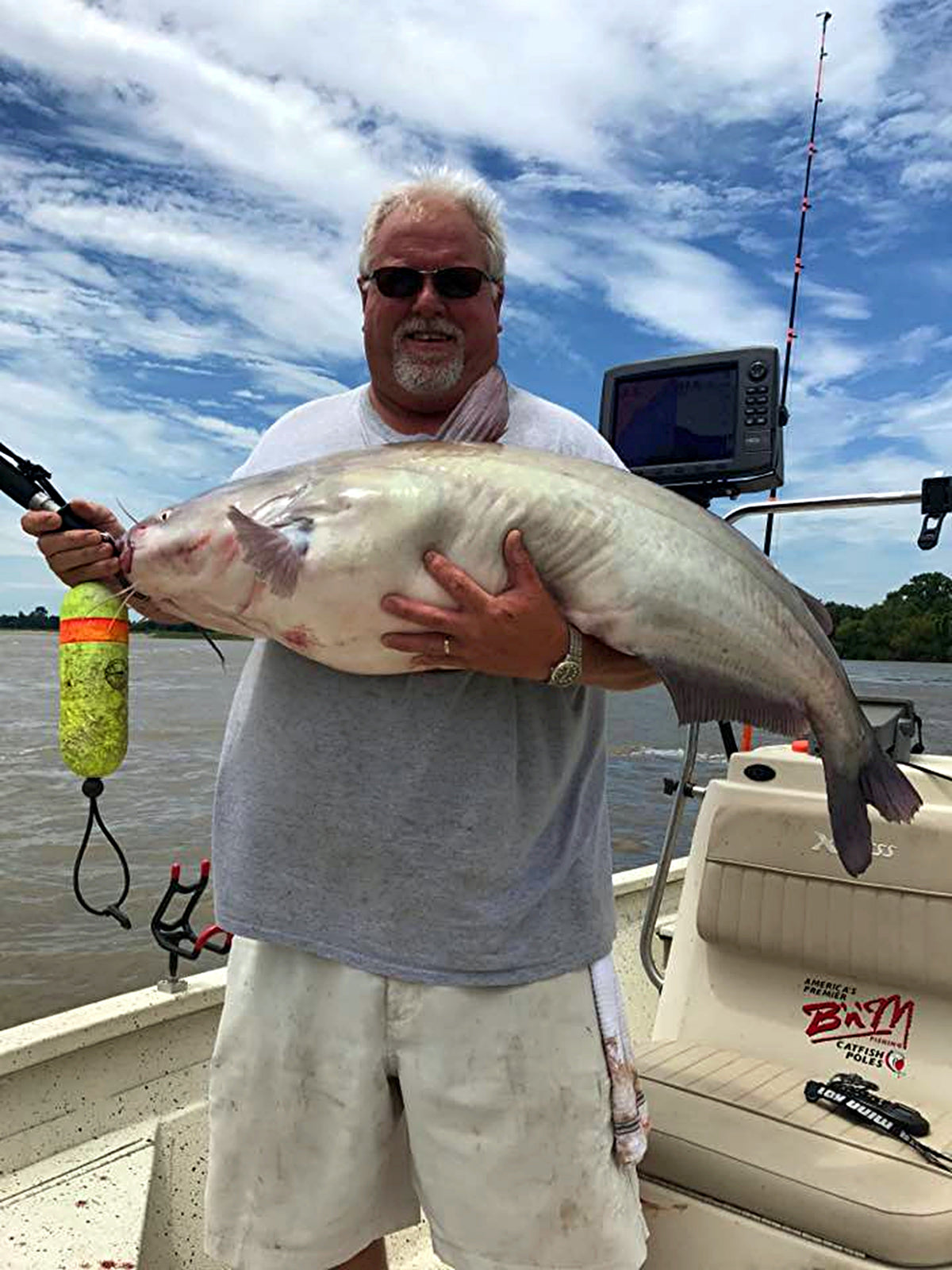When and How to Pull Crankbaits for Crappie (Part 2)
When and How to Pull Crankbaits for Crappie (Part 2)
In the second of this two part series, B’n’M pro staffer Kent Driscoll runs down everything you need to know to successfully catch crappie by trolling crankbaits.
By Phillip Gentry
Last issue B’n’M pro staffer Kent Driscoll nailed down the seasonal patterns that work best for pulling crankbaits for crappie (We’ll save you some time looking back – it’s now) and he also provided some great advice for setting up your boat to take full advantage of this extremely successful and popular summertime tactic.
This issue, Driscoll will discuss how to select the right crankbaits and how to present them to maximize your crank baiting efforts.
The business end of Driscoll’s trolling system is the crankbait itself. Driscoll’s hands- down favorite is a hometown bait—Bandit Lures, made in Sardis, Mississippi.
The Bandit crankbaits come in assorted sizes and colors but are popular due to their consistent diving depth. Driscoll uses the 300 series bait which he claims can reach fish down to 15 feet, depending on the amount of line out.
“The 300 is a small, crappie sized crankbait that runs true and deep” Driscoll said. “Running true right out of the box is the primary reason crappie anglers have flocked to this locally made bait.”
Bandit Lures was also quick to respond to demand for their products.
“I remember many years ago, a crappie angler approached us about painting some of our crankbaits in some unusual colors” remarked Bandit Lures CEO Chris Ross, “he said he was trolling them for crappie and was really wearing the fish out, especially on the brighter colors. We started offering some of these colors in our 300 series, which is a small crankbait with a deep diving bill. I can still tell when the local crappie get on a crankbait pattern because our bright pinks and pink with silver sparkles just fly out the door.”
Bandit Lures was quick to embrace the crappie crankbait trolling phenomena, but were not the first and certainly not the last baits to be used.
Crankbaits for trolling have been around for a long time and may have started with some old timers on Lake Enid using Bomber lures made in the 1950’s.
“Some of the old guys that fished Sardis and Enid back in the day used the old Bombers,” said Driscoll. “Those things caught fish too. I know one guy had a whole box of Bombers that hardly had any paint left on them because they’d been chewed off by all the crappie he’d caught on them.”
Driscoll said in more recent years, companies like Rapala, Arkie, and Pico, as well as a host of others were converting old favorites to use for crappie or developing new models just for crappie trolling.
The depth of presentation of the crankbaits is a coordination of variables including the amount of line out, working depth of the crankbait, and boat speed. Driscoll ranges his boat speed on average between 1.5 mph and 2.0 mph. Such precise graduations in speed require the uses of a GPS enabled electronics system that will measure speed to the tenth of a mph.
Years ago, Driscoll used to troll with his big motor and drag buckets behind the boat or attach trolling plates to the motor to get down to the right speeds. These days, all of his trolling propulsion is done with an electric Minn Kota variable speed, remote- controlled trolling motor.
“The problem with using the trolling motor was wearing the batteries down after only a few hours,” said Driscoll. “Two things changed that. The first was the trolling motor companies really increased their power efficiency so the motor will hold out and use less energy. The second is that marine batteries and others have come a long way with their storage capacity.”
Driscoll said one of the benefits he’s also seen with using the electric trolling motor is not spooking fish.
“Trolling crankbaits for crappie really took off when guys got the electric motors dialed in,” he said. “This is no longer just a Mississippi tactic trolling in the muddy water. We discovered you can troll in clear water lakes like Pickwick and Guntersville in Alabama and up in Tennessee and Georgia and into the Carolinas and also catch fish.”
Boat speed, amount of line out and the depth rating of the crankbait are all variable in the all- important depth of presentation.
Like all crappie fishing, depth of presentation is one of the main differences between catching fish and not catching fish. Crappie rarely, if ever dive down to hit a bait so it’s of utmost importance that your baits be at or slightly above the level where the fish are suspended.
Driscoll is hesitant to provide any type of formula for how much line out versus how fast to troll to get to a particular depth. This is because the depth ratings for crankbaits are so varied as well as other factors that will affect depth.
“You gotta put your time in on this,” he said. “There’s a book call Precision Trolling, I think they even make it in an app now, that will cut that time down, but it’s up to you to know what works on your boat.”
Driscoll is happy to share some of the data he’s collected on trolling Bandit crankbaits over the years. He uses a line out formula. If he wants to target fish that are holding 12 feet deep, he lets out 110 feet of line. His formula is:
Amount of line out / 10 + 1 foot. So to get to 12 feet he lets out 110 / 10 + 1 = 12 feet.
For the down rod calculation, using a 2 ounce weight above the crankbait, he simply doubles the amount of line out for the depth he wants to fish. So to reach 12 feet, he lets out 24 feet of line.

Driscoll shared the basics of his formula for trolling Bandit crankbaits in this illustration.
Obviously boat speed affects this too but not as much as when trolling jigs that are designed to dive to specific depths.
“Somedays the crappie want the bait slower and somedays they want it a little faster” said Driscoll. “Covering as much water as possible in order to find willing fish is another secret to the formula.”
Driscoll said marking fish on the graph and catching those fish is one of the greatest teaching aids he’s found when trolling crankbaits for crappie.
At B’n’M we are all about helping you catch more fish and enjoying your time on the water. Check out our catalog of top quality fishing tackle at bnmpoles.com or visit our Facebook page at facebook.com/bnmpoles and give us a like.
Also in Weekly Tips and Techniques

North Texas Fall Crappie Fishing with Brian Carter
Texas crappie pro-staffer Brian Carter loves to pitch jigs at standing timber during the fall of the year.

Summer Crappie Fishing with Billy Blakley
B’n’M pro-staffer Billy Blakley claims the copious amount of rainfall so far this year has created some great summer crappie fishing on Reelfoot Lake.

Search Tactics for Summer Catfish – Part 2
Catfish guide David Magness said his favorite search technique for slack water fishing is to troll drift rigs behind planer boards.


